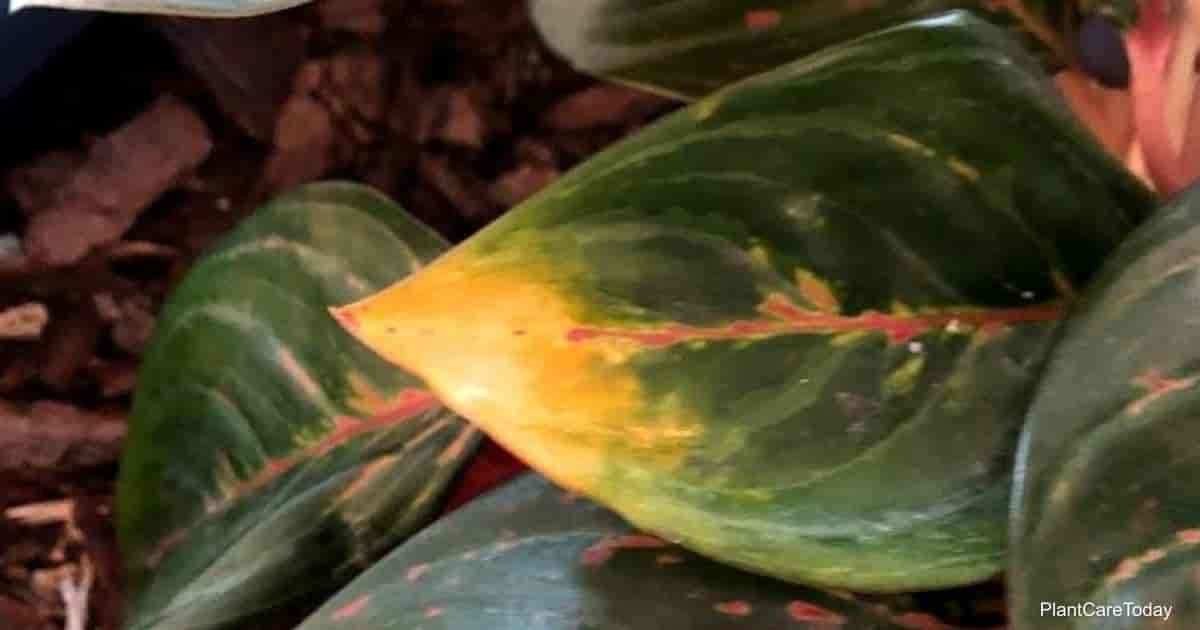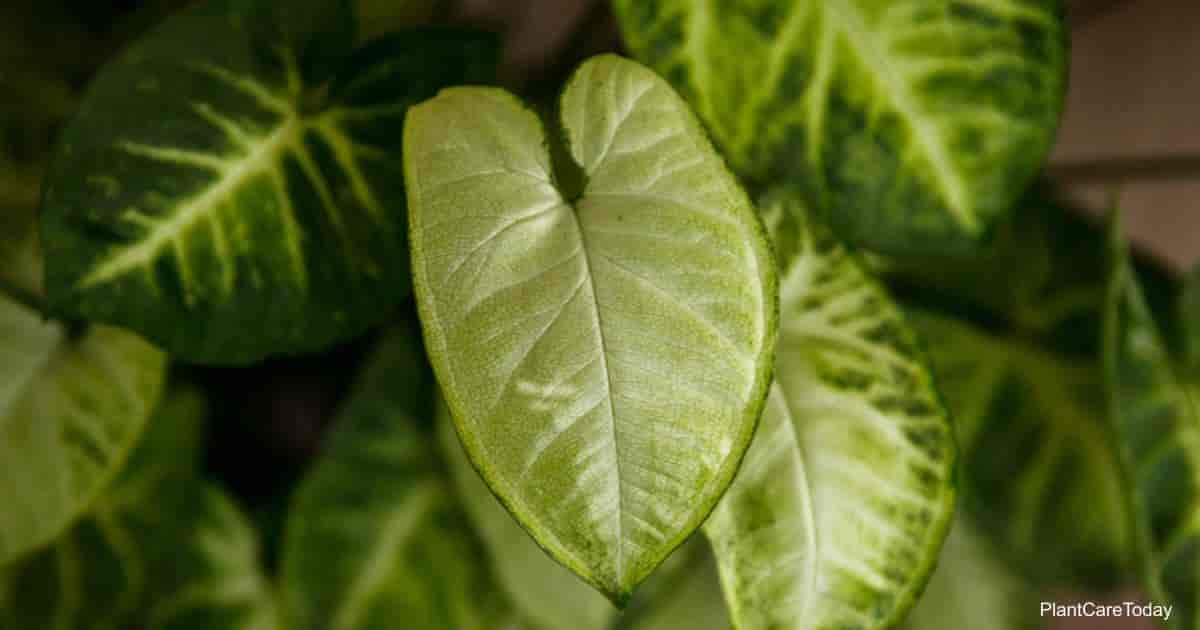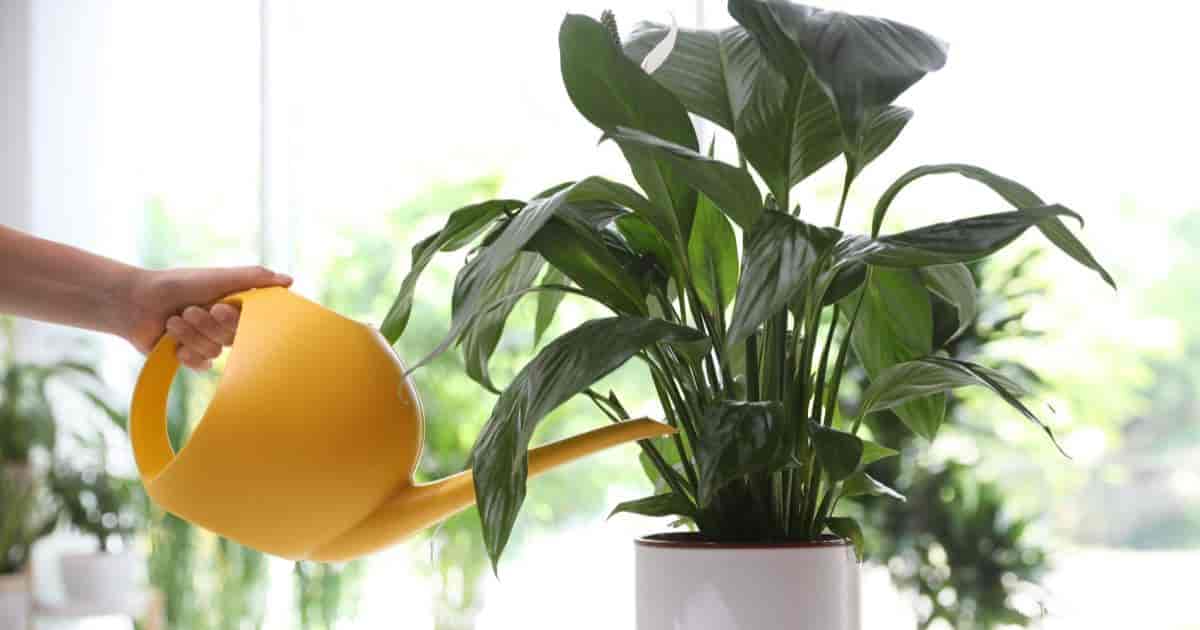With well over an estimated 1000 species, all Anthurium varieties are part of the popular genera in the Araceae family.
Hailing from Central and South America, these tropical ornamentals are hardy, and in general, Anthurium care is easy.
However, several pests and diseases can wreak havoc on your Anthurium.
Here are the most common threats, what damage they cause, and how to deal with them.
What Pests and Diseases Attack Anthuriums?
Bacterial Blight
Blight is a serious infection that may occur where the plant has been pierced or cut.
It also frequently shows up when the humidity is too high.
In Anthuriums, the species of bacterium responsible is Xanthomonas axonopodis.
Bacterial Wilt
Caused by the highly adapted Ralstonia solanacearum, this form of wilt can quickly spread to other nearby plants. In addition, it destroys the leaves of the attractive Anthurium crystallinum.
It can remain viable in soil or on tools for years without a host and is often mistaken for a watering issue.
Hot weather is when it’s most likely to spread.
Black Nose Disease
Colletotrichum gloeosporioides is an interesting fungus which attacks a wide range of flowering plants, especially tropical ones.
However, it uniquely reacts to Anthuriums, only going after the spadix when it readily affects all other plants’ parts.
Common Pests
Anthuriums can be affected by the usual suspects, namely aphids, mealybugs, scale, spider mites, and thrips.
These pests like to hide on the undersides of leaves and, except for the weblike bridges created by spider mites, are usually only spotted on close inspection.
Another thing they have in common is that all of these species are piercing pests, drinking plant sap as their food source.
Root Rot and Water Mold
Anthuriums are susceptible to Rhizoctonia solani, a fungal form of root rot.
This fungus can survive in barren soil for several years and spreads easily.
When provided with enough moisture, it will not only infect the roots and lower portions of the plant but can spread to the canopy.
A type of root rot is also caused by Phytophthora and Pythium, both commonly known as water mold.
What Damage Do Anthurium Pests and Diseases Cause?
Bacterial Blight
Blight can spread to other plants and causes yellow, weeping lesions, or bronzing of the leaves.
Once a plant is infected, the bacteria quickly spread throughout the plant and may kill leaves and cause flowers to fade or become infrequent, with advanced infections killing the plant completely.
Bacterial Wilt
Wilt can also yellow your plant’s leaves, and stems turn bronze or brown.
In advanced stages of infection, cuts will ooze out a brown slime.
As it can spread even in cooler temperatures, it’s often mistaken for inadequate watering until a plant’s been heavily infected.
Black Nose Disease
Black Nose gets its nickname because it will cause small black or brown flecks to form along the spadix.
As the infection advances, the flecks will turn into blisters that may cover the spadix or even cause it to fall off.
If it infects nearby non-anthuriums, the damage could be far worse and affect the entire plant.
Infestations
An infestation by any of the mentioned pests will generally have the same symptoms.
Leaves may develop spots, eventually curling and falling off.
The lesions caused by their feeding allow bacteria and mold spores to enter the plant, while the frass of these bugs (commonly called honeydew) can lead to sooty mold infections.
While it’s not common for most plants to die solely from an infestation, there’s a high risk of comorbidity due to secondary infections.
Root Rot and Water Mold
Root rot affects plants’ roots and prevents water absorption, leading to yellowing leaves and wilting.
Rhizoctonia solani can also make younger shoots limp and soggy, preventing them from supporting the plant.
The easiest way to tell it apart from water mold is the presence of fungal strands in the soil.
In all cases, root rot will kill roots and eventually the plant itself.
How To Control Anthurium Pests and Diseases?
While it seems like a large list of potential problems, common solutions can prevent or eliminate most or all of them at once.
Proper Care
Having the right temperature, humidity, soil, and water conditions can significantly reduce risk factors.
Always thoroughly examine plants for potential infections or infestations before introducing them to your collection, and use a preventative measure to be safe.
Also, always make sure your tools are sharp and kept sterilized before, during, and after any pruning.
Avoid allowing infected or infested or infected cuttings from coming in contact with healthy foliage, and wash your hands thoroughly between handling different plants.
Finally, always isolate infected or infested plants to help prevent spread.
Neem Oil: The One-Stop Killer and Preventer
While some plants are sensitive to it, neem oil is the safest and perhaps most effective treatment for all of the conditions mentioned.
For external problems, use a neem foliar spray around dusk or dawn every other day for 14 days or until the problem has been eliminated.
You may then apply it every 14 days as a preventative.
Meanwhile, neem soil soaks become a systemic pesticide that works on many bacterial and fungal infections for up to 22 days.
It may also be applied every 14 to 21 days as a preventative.
Note that neem may not be able to stop an advanced infection.
Chemical Options
You may have to resort to chemical fungicides (which will also work on both the blight and wilt bacterium listed here).
Each disease has its own Achilles heel for products, so be sure to buy the right product for the problem.
A Final Note
Prevention is the key, and catching things early is essential when that key fails.
A plant with an advanced infection may be beyond saving, and you won’t be able to use their cuttings to make new plants, even if they appear to be healthy.
You will also need to safely discard the soil if a plant has a fungal or bacterial infection that can retain viability.
Above all, though, don’t let the fear of your plant getting sick prevent you from enjoying it, as giving it regular checkups will keep it just as safe as they do for your family.
Credit : Gary Antosh (https://plantcaretoday.com/anthurium-pests-diseases.html)





